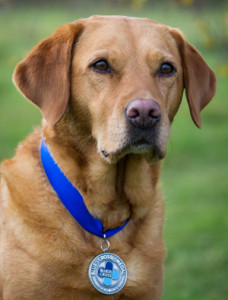Dogs are with us so often that it is easy to forget how remarkable they are. Introducing some dogs reminds us of the incredible potential of our best friends.
By the time Chaser was three years old, she knew the names of over a thousand objects. The only reason she stopped learning was because her owner, John, ran out of toys! Some dogs can learn a word after they have heard it only once. They can also learn a new word even if they have not heard it before– by matching a new word with a new object. This is called fast mapping and it is how children can learn words at an astonishing rate.
http://www.chaserthebordercollie.com/
Philip is a Hungarian assistance dog whose owner is in a wheelchair. Philip can pick up keys, fetch a cell phone, turn lights on and off, and pull items from supermarket shelves and put them in a basket. However, his special ability is something that surprised scientists – Philip can imitate. If you do something on two legs, Philip will copy you on four legs. Philip can twirl around, jump in the air, and even take a bow. Before Philip, scientist thought that only people could imitate. Philip is even more impressive because not only can he copy you, he has to map your actions onto his own doggy body plan. Now that’s a clever dog.
https://familydogproject.elte.hu/
 One day Daisy kept lunging at her owner Claire’s chest. Another owner might have ignored it, but Claire was a scientist who had worked with assistance dogs for 20 years. When Claire investigated, she found a lump. The tumor was early stage, deep in her breast. If Daisy had not alerted Claire, the tumor would have been advanced by the time Claire had found it herself. Daisy has gone on to detect 550 cases of cancer and has been awarded the Blue Cross Medal for her work. Dogs have been trained to detect dozens of different types of cancer, including bladder, colon, prostate, kidney, melanomas. No one knows how dogs do it, but one idea is that they can smell the odor tumors produce. Dogs can sniff out cancer at stage zero, and they are usually more than 95% correct – better than some lab tests.
One day Daisy kept lunging at her owner Claire’s chest. Another owner might have ignored it, but Claire was a scientist who had worked with assistance dogs for 20 years. When Claire investigated, she found a lump. The tumor was early stage, deep in her breast. If Daisy had not alerted Claire, the tumor would have been advanced by the time Claire had found it herself. Daisy has gone on to detect 550 cases of cancer and has been awarded the Blue Cross Medal for her work. Dogs have been trained to detect dozens of different types of cancer, including bladder, colon, prostate, kidney, melanomas. No one knows how dogs do it, but one idea is that they can smell the odor tumors produce. Dogs can sniff out cancer at stage zero, and they are usually more than 95% correct – better than some lab tests.
https://medicaldetectiondogs.org.uk/
Kayley is gifted. She wrote her first novel when she was 12 and composes her own music. Kayley also has a severe form of Tourettes that causes uncontrolled ‘tics’, which used to get so bad that her legs would collapse while she was crossing the road. In middle school, Kayley was confined to a wheelchair. Help arrived in the form of a dog called Mack. When Kayley feels a tic coming, she simply leans against Mack, and the tic stops. Or Mack will lie across her lap, and tics that used to last for hours will pass in seconds. Kayley is no longer in a wheelchair and can ride a horse and drive a car. She is now in college, studying to be a neuroscientist. Dogs can help children with all sorts of disabilities. Children with autism talk and sleep better when a dog is with them, and having a dog cuts their stress hormone cortisol by half. Dogs can tell parents of children with epilepsy when their child is about to have a seizure. The power dogs have on children can be so great that even having a dog to pet in hospital can be more effective than pain relieving drugs.


